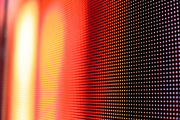Preface
Since Edison invented the incandescent lamp in 1879, electric light source lighting has gone through more than a century. Among them, there are three important stages of development. The representative light sources are incandescent lamps, fluorescent lamps and HID (High Intensity Discharge) lamps. The incandescent lamp is easy to install and use, but it is a heat radiation source. Most of the input electric power becomes infrared radiation and a large heat loss. The proportion of radiation falling in the visible light region is small, so its light efficiency is low. Moreover, it has a short life and is easily damaged.
Brief Introduction to LED
The working principle of the fluorescent lamp is: the electric current excites mercury atoms and makes them emit ultraviolet photons, these photons excite the phosphor to emit visible light. Although it can save electricity compared to incandescent lamps, it is limited by the efficiency of converting ultraviolet rays into visible light, and the improvement of light efficiency is limited. Moreover, it has disadvantages such as electromagnetic pollution, short service life, and fragility. The main component of mercury can also cause environmental pollution. . HID lighting efficiency can already exceed 100lm/W, but due to the loss of thermal conductivity, ultraviolet and infrared, it is difficult to greatly improve the light efficiency, and there are problems such as high cost, difficult maintenance, short life, and electromagnetic radiation. In recent decades, people have never stopped researching and exploring the development of new lighting sources. Europe has specially formulated a five-year action plan, proposing that new light sources must meet three conditions: high efficiency and energy saving; materials are not harmful to the environment; simulation of natural light, color rendering index close to 100.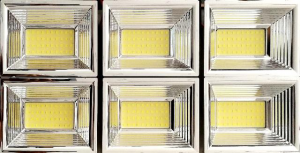
Light Emitting Diode (Light Emitting Diode, referred to as LED) is an important optoelectronic device. It is widely used in scientific research and industrial and agricultural production. Although the light emitting diode is small, it is necessary to accurately measure its light and radiation parameters It is not an easy task. At present, there are still big differences in test comparisons around the world. In view of this, the CIE (International Commission on Illumination) TC2-34 team conducted a study on this, and the technical report proposed formed CIE127- 1997 document.
With the emergence of a new generation of semiconductor materials AlGaAs (aluminum gallium arsenide), AlInGaP (aluminum indium gallium phosphide) and AlInGaN (aluminum indium gallium nitride) and technological breakthroughs in light-emitting diode packaging, single-chip red, green, blue, The power level of white LEDs continues to increase, and high-brightness LEDs are expected to become the fourth generation of light sources. LED is a brand-new revolution and a major breakthrough in the development of electric light sources. It fundamentally changes the light-emitting mechanism of light sources. It has the advantages of high light efficiency, full color, long life, environmental protection, and small size. It can be applied to a variety of Colored and white illuminated areas. While improving the quality and utility of lighting, LED light sources can save energy and improve environmental pollution, which is conducive to the harmonious development of the national economy and the people’s livelihood. Therefore, actively researching new technologies for LED light sources and accelerating the development of the LED lighting industry have significant economic benefits and far-reaching social significance.
The development history of LED materials
According to the light-emitting mechanism of LEDs, the energy levels occupied by electrons and holes are different depending on the material. The relative energy level difference determines the level of energy emitted by the combination of the two carriers, which can produce different energy levels. Photons can control the wavelength of light emitted by the LED, which is the spectrum or color. Therefore, to determine the color of the light emitted by the LED, it can be selected by the structure of the material. In fact, the development of LEDs is based on the development of semiconductor materials.
The material used for the first semiconductor laser in manufacturing history is GaAs with a p-n isomorphic junction with an energy gap of 1.424eV, and the emitted photon wavelength is about 0.84μm, which falls in the infrared spectrum. The relationship between this energy gap and the wavelength of the emitted photons can be easily calculated theoretically. Researchers use these theoretical calculations to predict the materials that must be used in various visible light ranges, and then based on the characteristics of these materials. And design process technology and related equipment.
In addition to GaAs, one of the most well-known luminescent materials is a material called Gallium Phosphide (GaP) with a similar structure, with an energy gap of 2.261eV. By mixing GaAs and GaP, the structure of GaAs1-xPx can be obtained, where x represents the percentage of phosphorus substituted for arsenic. When x gradually increases from 0 to 1, the material structure changes from GaAs to GaP. The energy gap is increased from 1.424eV to 2.261eV. Within this range, theoretically all light wavelengths from infrared light to green light can be obtained. In fact, the GaAs1-xPx system is the most important material structure in the early LED industry.
In 1962, the first red LED was made of GaAsP, a compound semiconductor material. Until the development of quaternary elements matures, almost all visible light LEDs are manufactured with this series of materials. In addition to the infrared light emitted by GaAs, the most widely used ones include GaP and GaAs0.6P0.4 red LEDs, GaAs0.35P0.65 orange LEDs, GaAs0.14P0.86 yellow LEDs and GaP Green LED. The energy gap of GaP is the highest in this series of materials, and the emitted wavelength is also the shortest, but it only reaches the green range.
Early red LEDs had very low luminous efficiency. With the emergence of semiconductor materials AlGaAs and the application of full lattice matching direct energy gap technology, their luminous efficiency has been significantly improved, exceeding that of incandescent lamps with red filters. The transparent substrate technology of re-growing AlGaAs on AlGaAs substrate doubles the light efficiency of red LED.
Yellow, Red and White LED
The development of OMVPE (organic metal vapor phase epitaxy) technology has promoted the birth of a new material AlInGaP, which has turned the development of high-brightness LEDs from yellow light to red light. In the early 1990s, Lumileds Lighting Company used AlInGaP material to make high-brightness LEDs that can emit red light and its nearby wavelength spectrum.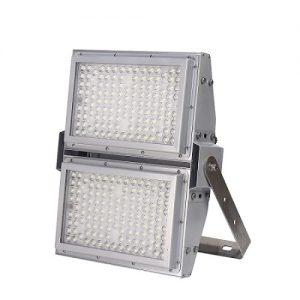
Initially, the performance of AlInGaP materials was not particularly good. Alloy ordering, acceptor atom hydrogen passivation, PN junction positioning, and oxygenation of aluminum-containing semiconductor layers are several problems that need to be solved urgently. Researchers have spent nearly a decade. After solving this problem, the light quantum conversion efficiency inside the LED made of AlInGaP can be greatly improved, close to 100%, and almost every pair of electrons and holes can produce a photon.
However, these internal photons cannot be completely converted into visible light outside the LED. The main obstacle is that photons will be absorbed by the narrow band gap on the GaAs base. In 1994, Hewlett-Packard (HP) used an etching method to remove the GaAs base, and replaced it with a transparent GaP using a wafer bonding process, which significantly improved the light efficiency to 25lm/W, almost with a red filter Ten times that of incandescent lamps. Red LEDs are also gradually being used in car taillights, traffic lights and outdoor billboards.
Soon after the commercialization of AlInGaP, Nichia Chemical’s Shuji Nakamura, Nagoya University’s Akasaki and Amano professors, and Meijo University gradually mastered a new semiconductor material manufacturing process, that is, the use of air pressure OMVPE in the sapphire lining AlInGaN is grown on the bottom. Compared with AlInGaP, AlInGaN has a wider energy gap and can emit green, blue and ultraviolet light, but the light efficiency is lower. The light quantum conversion efficiency of AlInGaN green LED is about 20%-40%, and the blue light is about 40-60%. Although green LEDs have lower luminous efficiency, human eyes are more sensitive to green light than blue and red light, so companies such as Nichia Chemical and Lumileds have used red, green, and blue LEDs to make full-color indications. Lights and signal lights.
High Brightness LEDs
The continuous progress of semiconductor technology and materials has greatly promoted the development of LEDs. In the past few decades, similar to the well-known Moore’s law in large-scale integrated circuits, the continuous increase of LED luminous flux follows Haitz’s law, which doubles every 18-24 months. In the past ten years, high-brightness and full-colorization have always been frontier topics in the research of LED materials and device technology. High brightness refers to LEDs whose luminous intensity reaches or exceeds 100mcd, also known as candela (cd) LEDs. The development of high-brightness AlInGaP and InGaN is progressing very rapidly, and has reached a performance level that conventional materials GaA1As, GaAsP, and GaP cannot reach.
In 1991, Toshiba Corporation of Japan and Hewlett-Packard Company of the United States developed AlInGaP 620nm orange high-brightness LED, and in 1992 AlInGaP590nm yellow high-brightness LED was put into practical use. In the same year, Toshiba successfully developed an InGaA1P 573nm yellow-green high-brightness LED with a normal light intensity of 2cd. In 1994, Nichia, Japan, developed an InGaN 450nm blue (green) high-brightness LED. At this point, the three primary colors of red, green, blue, orange, and yellow LEDs required for color display have reached candela-level luminous intensity, achieving high brightness and full color.
High-brightness red A1GaAs series LEDs have higher luminous efficiency than GaAsP series LEDs. The lumen efficiency of transparent substrate A1GaAs series LEDs (640nm) is close to 10lm/w, which is 10 times larger than that of red GaAsP series LEDs. High brightness AlInGaP series LEDs provide the same colors as GaAsP series LEDs, including: green yellow (560nm), light green yellow (570nm), yellow (585nm), light yellow (590nm), orange (605nm), light red (625nm), Deep red (640nm). The luminous efficiency of the transparent substrate AlInGaP series LED is compared with other LED structures. The luminous efficiency of the absorbing substrate AlInGaP series LED is 10lm/w, and the transparent substrate is 20lm/w, which is higher than that of GaAsP series LEDs in the wavelength range of 590-626nm. The efficiency is 10-20 times higher than that of GaAsP-GaP LED in the wavelength range of 560-570.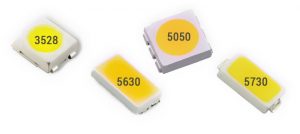
High-brightness InGaN LEDs provide blue light and green light, with a wavelength range of 450-480nm for blue, 500nm for blue-green, 520nm for green, and a lumen efficiency of 10-15lm/w. The current lumen efficiency of high-brightness LEDs has surpassed that of incandescent lamps, and can replace incandescent lamps with a power of less than 1w, and LED arrays can replace incandescent lamps with a power of 150w. For many applications, incandescent lamps use filters to obtain red, orange, green and blue colors, while high-brightness LEDs made of AlInGaP and InGaN materials combine multiple (red, blue, and green) high-brightness LED chips together, A variety of colors can be obtained without filters, including red, orange, yellow, green, and blue. At present, its luminous efficiency has exceeded that of incandescent lamps, and the forward fluorescent lamp is close to it, and the luminous brightness is higher than 1000mcd.
LED Classification
According to the luminous color of the luminous tube:
It can be divided into red, orange, green (subdivided into yellow-green, standard green and pure green), blue light and so on. In addition, some light-emitting diodes contain chips of two or three colors.
According to the light-emitting diodes doped or not doped with scattering agents, colored or colorless, the above-mentioned light-emitting diodes of various colors can be divided into four types: colored and transparent, colorless and transparent, colored scattering and colorless scattering. Scattering light-emitting diodes are used as indicator lights. According to the characteristics of the light emitting surface of the luminous tube.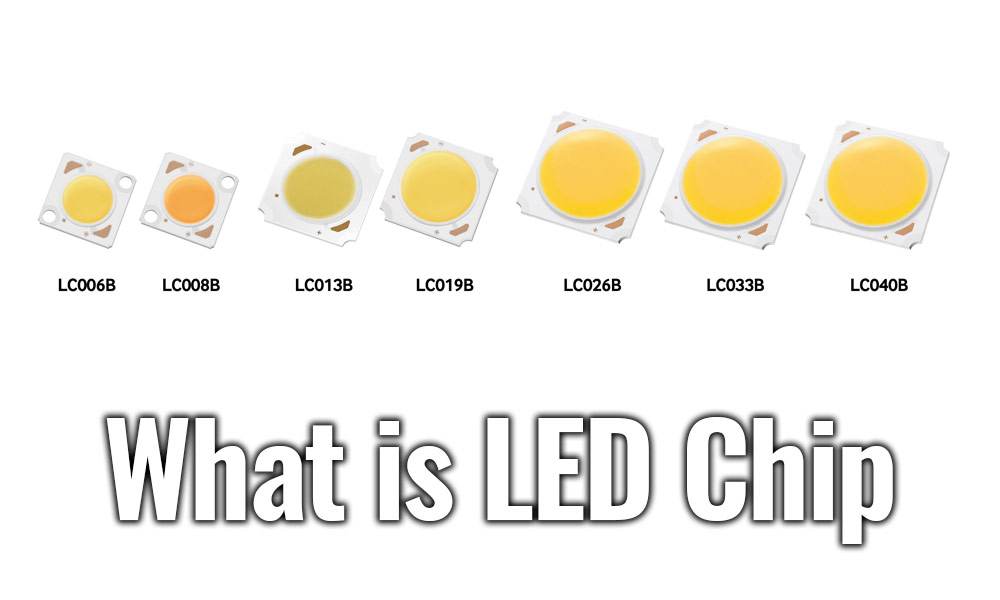
According to the characteristics of the light emitting surface of the luminous tube:
Round lights, square lights, rectangles, surface-emitting tubes, lateral tubes, micro tubes for surface mounting, etc. According to the diameter, the circular lamp is divided into φ2mm, φ4.4mm, φ5mm, φ8mm, φ10mm and φ20mm. In foreign countries, light-emitting diodes with φ3mm are usually recorded as T-1; those with φ5mm are recorded as T-1 (3/4); those with φ4.4mm are recorded as T-1 (1/4).
There are three categories from the angular distribution of luminous intensity:
(1) High directivity. Generally, it is a pointed epoxy package, or a package with a metal reflective cavity, and no scattering agent is added. The half-value angle is 5°-20° or less, with high directivity, and can be used as a local illumination light source, or combined with a light detector to form an automatic detection system.
(2) Standard type. Usually used as indicator light, its half-value angle is 20°~45°.
(3) Scattering type. This is an indicator light with a larger viewing angle, the half-value angle is 45°-90° or more, and the amount of scattering agent is larger.
According to the structure of light-emitting diodes:
According to the structure of light emitting diodes, there are full epoxy encapsulation, metal base epoxy encapsulation, ceramic base epoxy encapsulation and glass encapsulation.
According to luminous intensity and working current:
According to the luminous intensity and working current, there are ordinary brightness LEDs (luminous intensity 100mcd); the luminous intensity between 10-100mcd is called high-brightness LED.
Generally, the working current of LEDs ranges from ten mA to tens of mA, while the working current of low-current LEDs is below 2 mA (the brightness is the same as that of ordinary LEDs).
In addition to the above classification methods, there are also methods of classification by chip material and classification by function.




